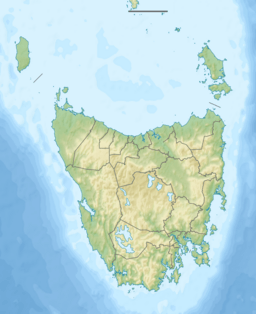Orielton Lagoon facts for kids
Quick facts for kids Orielton Lagoon |
|
|---|---|

Part of a flock of bar-tailed godwit at Orielton Lagoon
|
|
| Location | South east Tasmania, Australia |
| Coordinates | 42°47′24″S 147°31′48″E / 42.79000°S 147.53000°E |
| Type | Dystrophic lagoon |
| Basin countries | Australia |
| Designation |
|
| Surface area | 265 hectares (650 acres) |
| Average depth | 1.3 metres (4 ft 3 in) |
| Official name: Pittwater-Orielton Lagoon | |
| Designated: | 16 November 1982 |
| Reference #: | 254 |
The Orielton Lagoon is a shallow body of water located in south-east Tasmania, Australia. You can find it west of the town of Sorell. It's a special place for many animals and plants.
Contents
About Orielton Lagoon
This lagoon covers about 265 hectares, which is roughly the size of 500 football fields! It's not very deep, averaging only about 1.3 meters. The Sorell Causeway separates Orielton Lagoon from another body of water called Pitt Water.
A Special Home for Wildlife
Orielton Lagoon is a very important place for nature. It's recognized as a Ramsar Wetland. This means it's an internationally important wetland, especially for migratory birds. These are birds that travel huge distances every year.
The lagoon provides a safe home for many types of shorebirds. These birds often feed along the water's edge. It also supports important plants and animals that are special to this region of Tasmania.
An Important Bird Area
Orielton Lagoon is part of the South Arm Important Bird Area (IBA). BirdLife International has named it an IBA because it's crucial for protecting certain bird species. For example, it's a key spot for pied oystercatchers. It's also vital for the many migratory waders, or shorebirds, that use the East Asian – Australasian Flyway.
The East Asian – Australasian Flyway
The East Asian – Australasian Flyway is like a superhighway in the sky for birds. It's a major migration route that stretches from Alaska and Siberia all the way down to Australia and New Zealand. Millions of birds use this path every year to move between their breeding grounds and their feeding grounds. Orielton Lagoon is a vital stopover point for these birds, where they can rest and find food during their long journeys.


